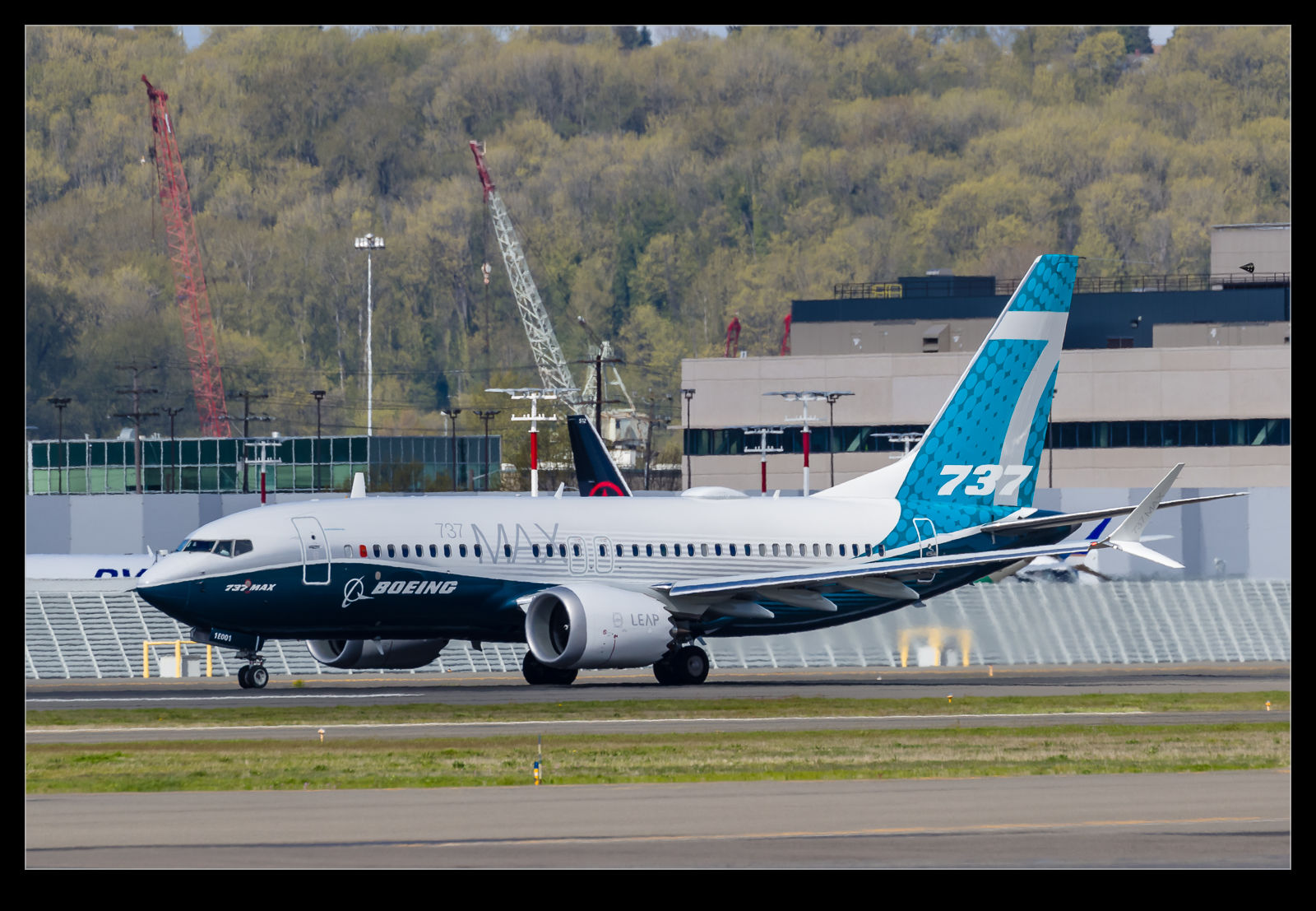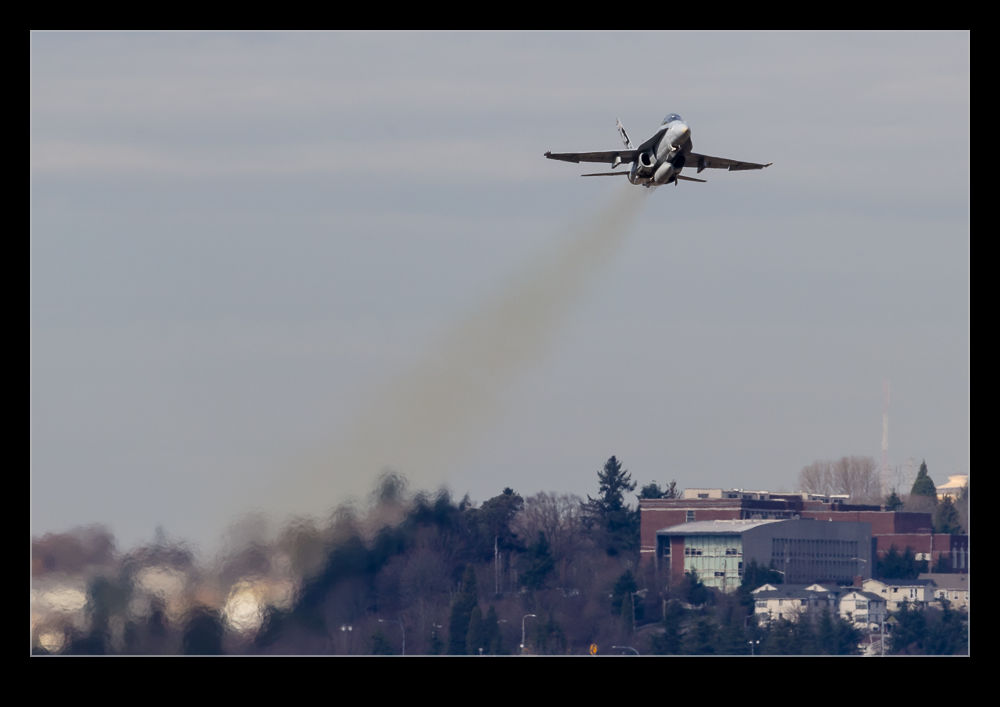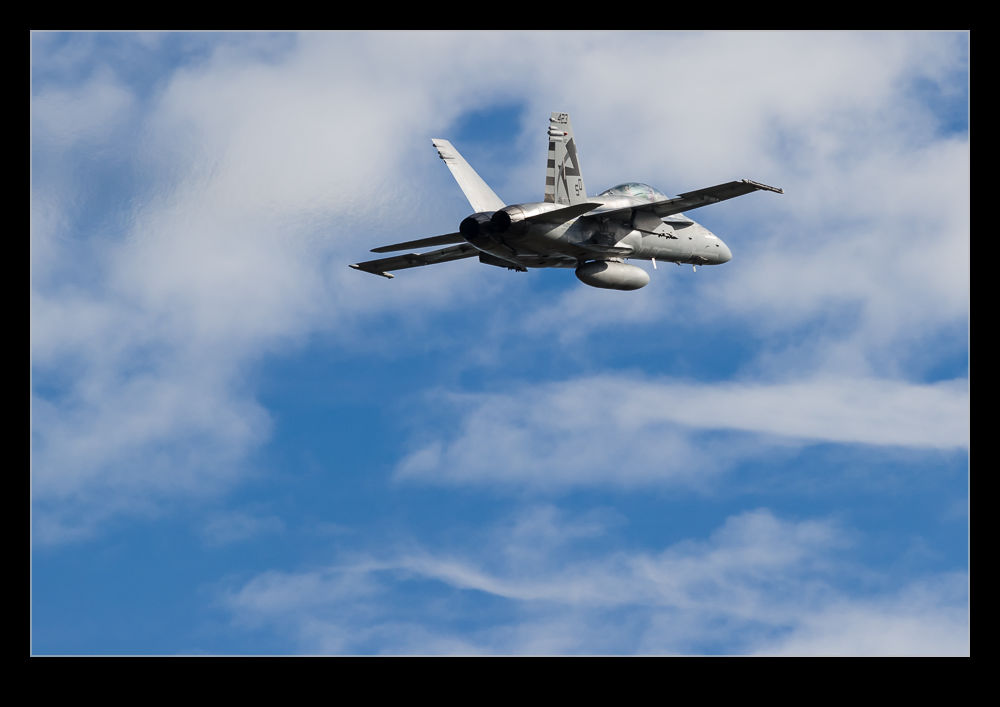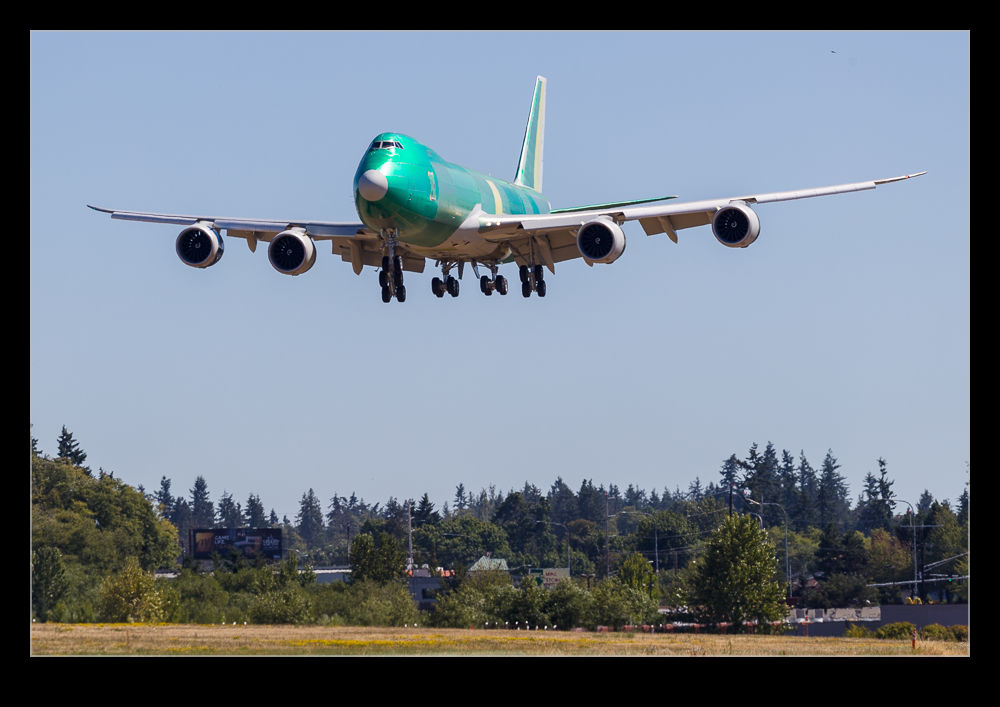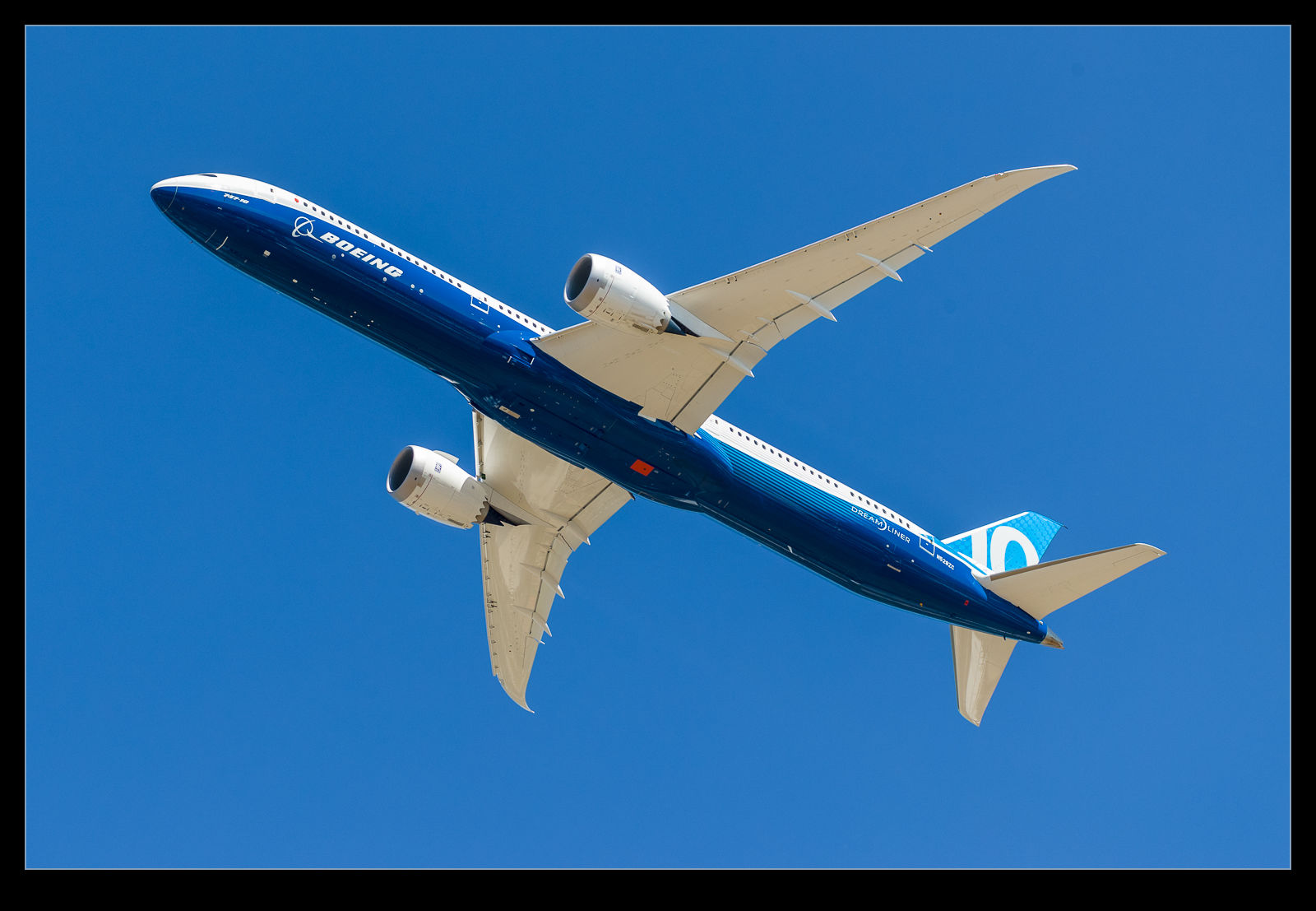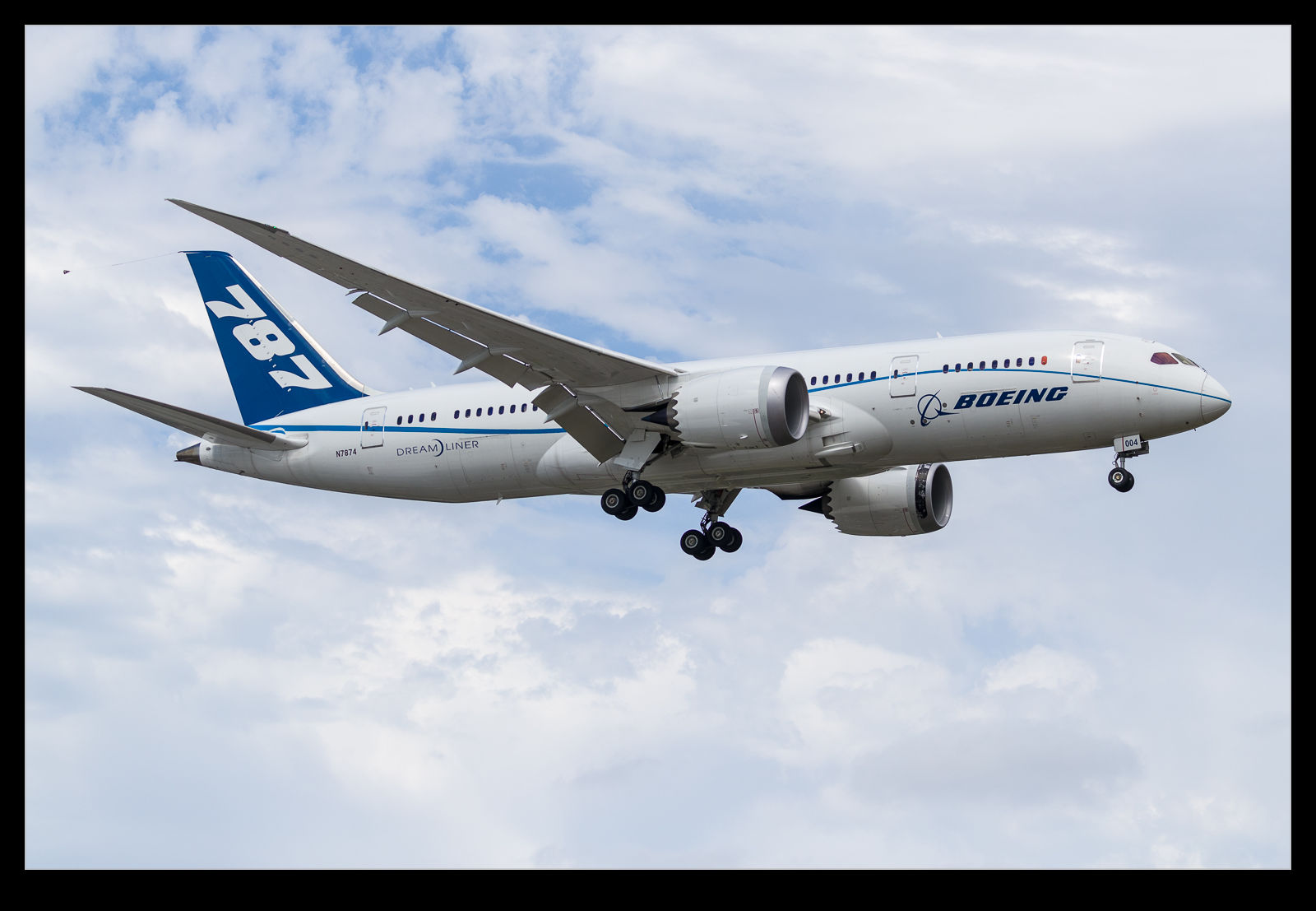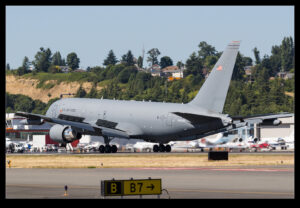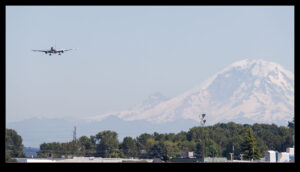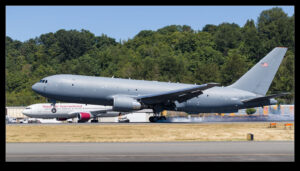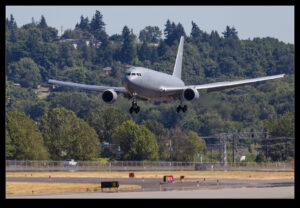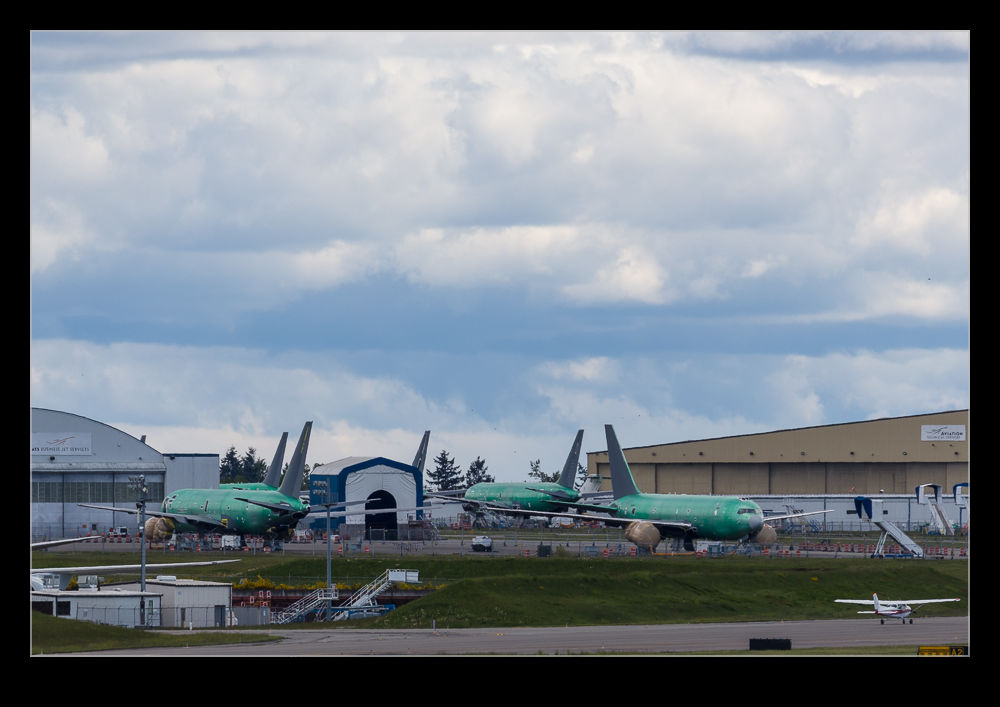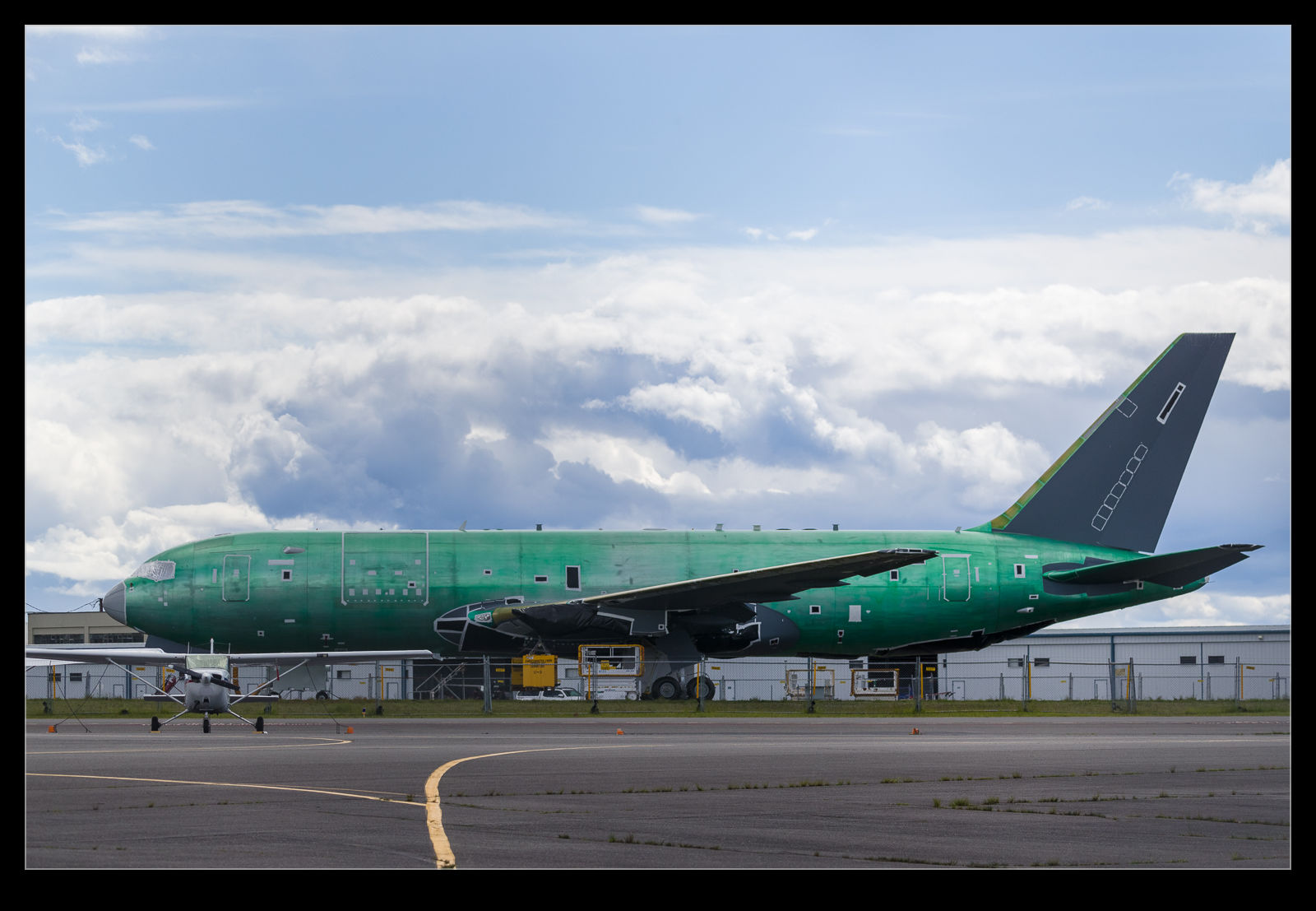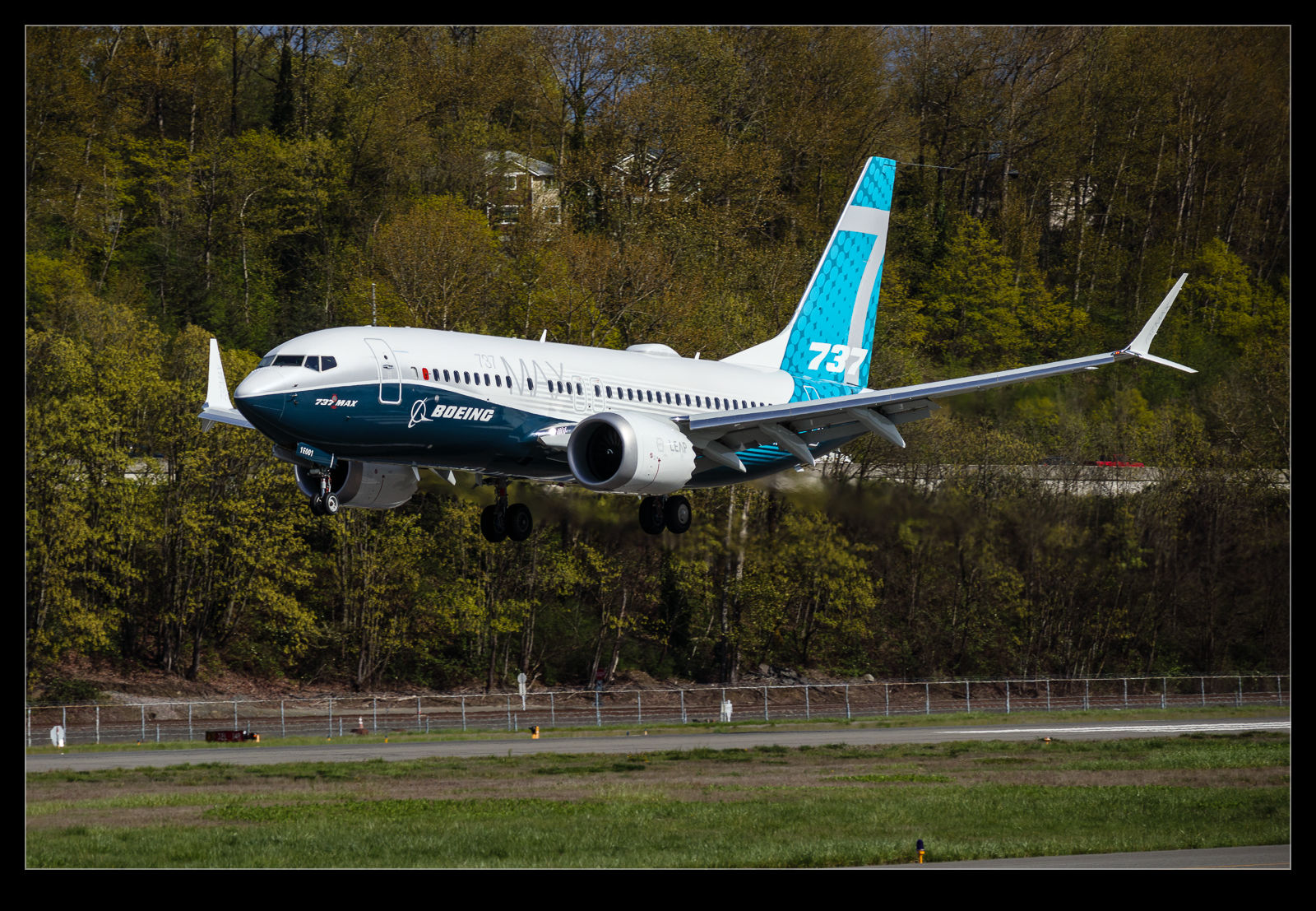 The 737 Max8 and Max9 Jets are both certificated and in service. Next to come along is the Max7. It is a lower priority as a result of a far lower level of orders combined with a redesign it underwent to make it larger than originally intended. It is now flying though. I saw one aircraft on the ramp at Renton when passing by and also saw the first test aircraft landing at Boeing Field. I actually saw it take off as I drove in to the city heading to a meeting and it returned at the end of the day. Neither the Max7 nor the A319neo has sold well so it will be interesting to see how many of these enter service.
The 737 Max8 and Max9 Jets are both certificated and in service. Next to come along is the Max7. It is a lower priority as a result of a far lower level of orders combined with a redesign it underwent to make it larger than originally intended. It is now flying though. I saw one aircraft on the ramp at Renton when passing by and also saw the first test aircraft landing at Boeing Field. I actually saw it take off as I drove in to the city heading to a meeting and it returned at the end of the day. Neither the Max7 nor the A319neo has sold well so it will be interesting to see how many of these enter service.
Tag Archives: test
Going Mirrorless
Being late to the party is something that I make a habit of. You could also be more optimistic and say that I am not an early adopter. A number of friends and colleagues have added a mirrorless body to their collection of gear and I have followed suit. I am perfectly happy with the performance of my SLRs. This was to add something rather than replace something. The primary interest was in size and convenience. There are times when lugging the heavy bodies around is just inconvenient.
I went with an EOS M6. I did consider going with a different manufacturer but using other equipment I already have was one factor. Another was that this camera gave me an option I was quite keen on. It has a screen for use while shooting but it also has an optional viewfinder to slot into the hot shoe. This was discounted to only $11 when I bought the camera. I like a viewfinder hit am okay with a screen. Nancy, on the other hand, does not like screens so the viewfinder can be brought along if required and will make her happier to use the camera.
So far my experience with it has been very good. Image quality has been fine, the controls are good and let me make adjustments without needing to enter menus. The flippy screen is really handy and the kit lens fits plenty of needs. The app that works with it is also pretty handy which gives a few options I wish the SLR could match! The time lapse functionality is good too. I have not tested it fully with my range of lenses and will do so at some point. However, for what I bought it for, it is doing the trick nicely.
Pegasus Testing with the Hornet (and it’s not raining)
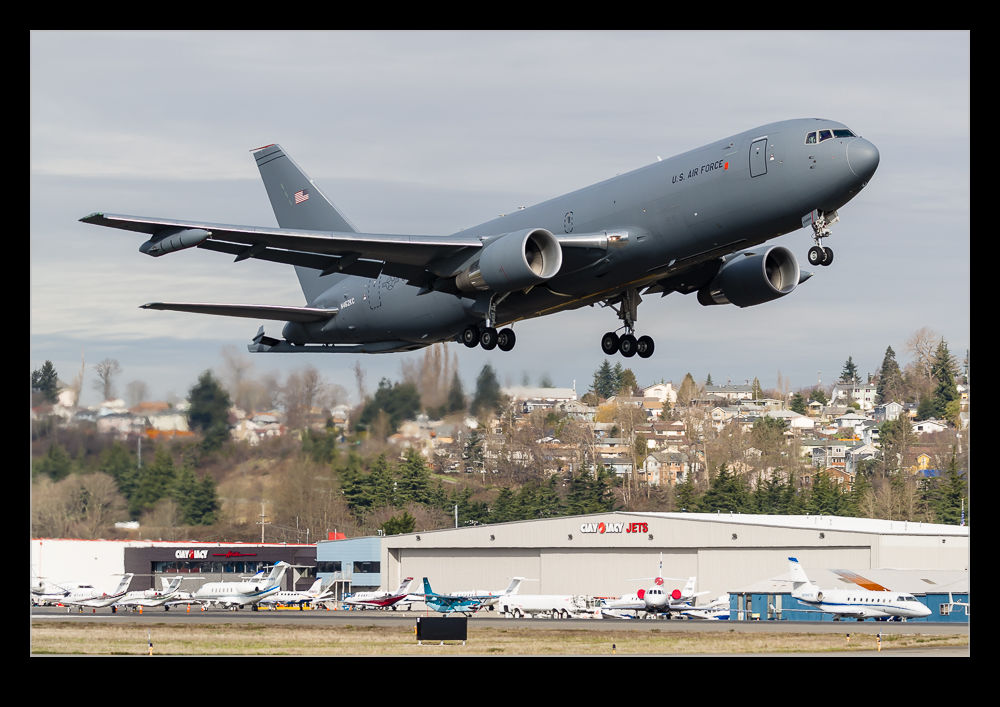 My luck with KC-46s and bad weather broke recently with a Pegasus launching out of Boeing Field on a glorious day. It was carrying out trials work with a US Navy Hornet. This jet was the subject of its own post. The KC-46 followed it down the runway. It rotated in a good location and the light was so much nicer than I have had recently so I was very happy to get shots of it as it climbed out and headed off to the airspace set aside for testing.
My luck with KC-46s and bad weather broke recently with a Pegasus launching out of Boeing Field on a glorious day. It was carrying out trials work with a US Navy Hornet. This jet was the subject of its own post. The KC-46 followed it down the runway. It rotated in a good location and the light was so much nicer than I have had recently so I was very happy to get shots of it as it climbed out and headed off to the airspace set aside for testing.
Salty Dog Hornet Goes Tanking
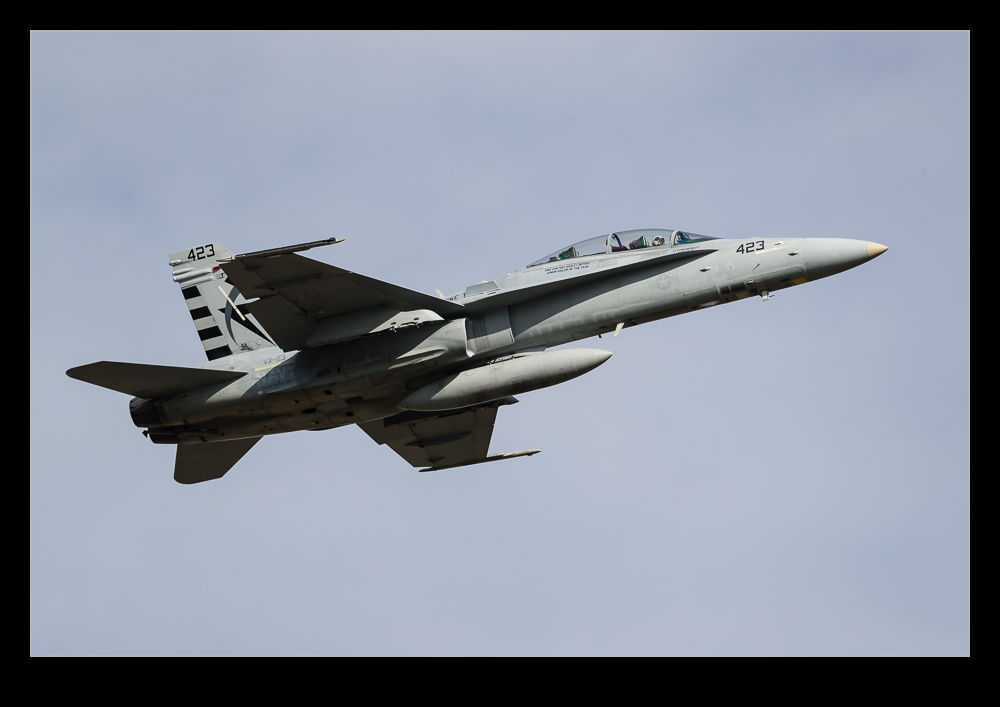 The never-ending test program for the KC-46 Pegasus involves testing with a variety of receiver aircraft. Recently, the Navy has deployed jets to Boeing Field to work with the tankers. While I was there, it was a Boeing F/A-18D Hornet that was sent across. Operating with the call-sign, Salty Dog, the Hornet blasted out of the field ahead of its tanker. They were scheduled to be up until after dark so I didn’t hang around for their return.
The never-ending test program for the KC-46 Pegasus involves testing with a variety of receiver aircraft. Recently, the Navy has deployed jets to Boeing Field to work with the tankers. While I was there, it was a Boeing F/A-18D Hornet that was sent across. Operating with the call-sign, Salty Dog, the Hornet blasted out of the field ahead of its tanker. They were scheduled to be up until after dark so I didn’t hang around for their return.
Trailing Static Cones
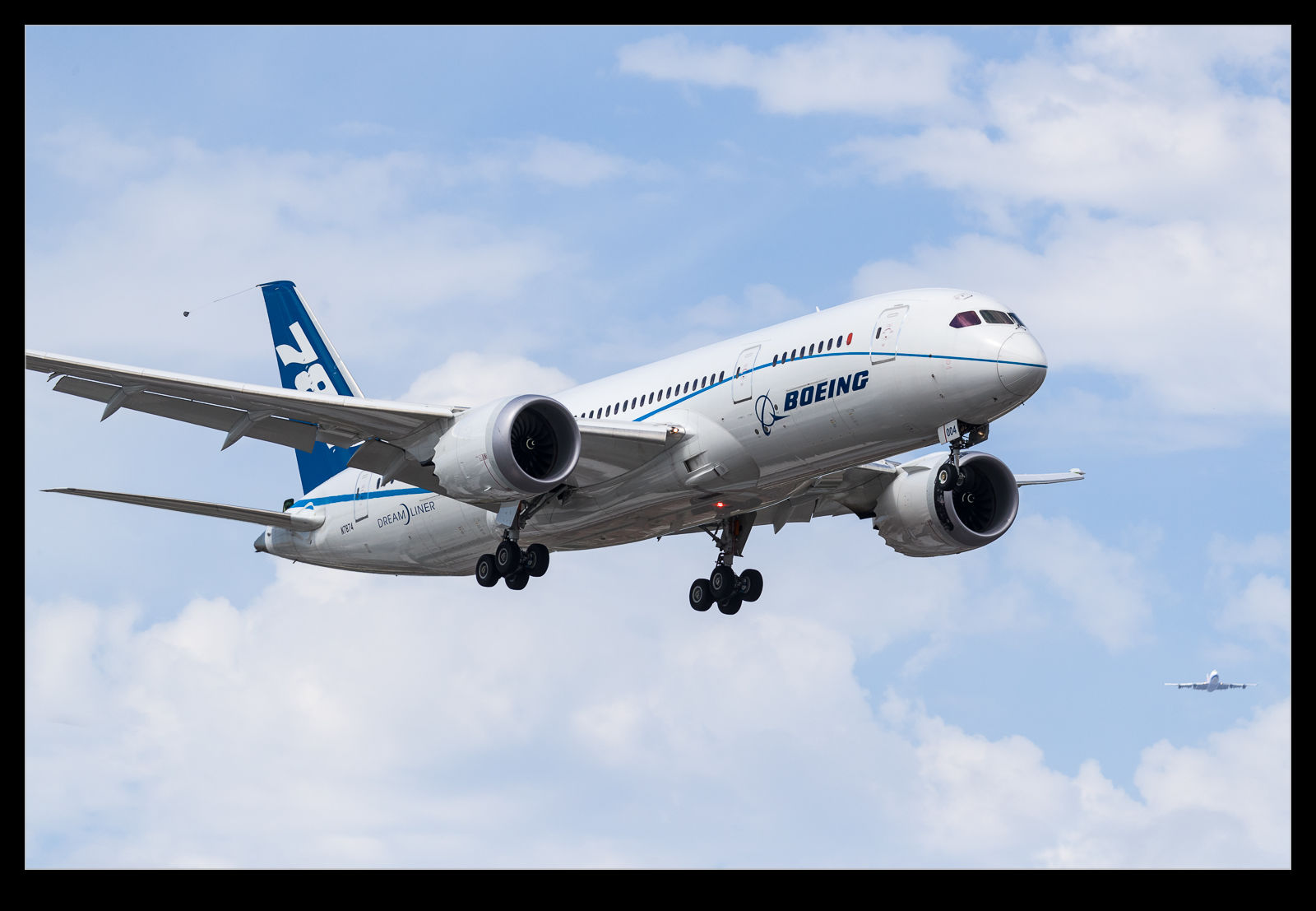 For the people that don’t care for my aviation posts, this one won’t be of interest. For the aviation fans that don’t care about the techie stuff, this will also be of limited interest. That probably leaves a very small group of readers by now (Gary, I am trusting you are still here). This is about a piece of flight test instrumentation that often causes questions when people see it. It is the trailing static cone.
For the people that don’t care for my aviation posts, this one won’t be of interest. For the aviation fans that don’t care about the techie stuff, this will also be of limited interest. That probably leaves a very small group of readers by now (Gary, I am trusting you are still here). This is about a piece of flight test instrumentation that often causes questions when people see it. It is the trailing static cone.
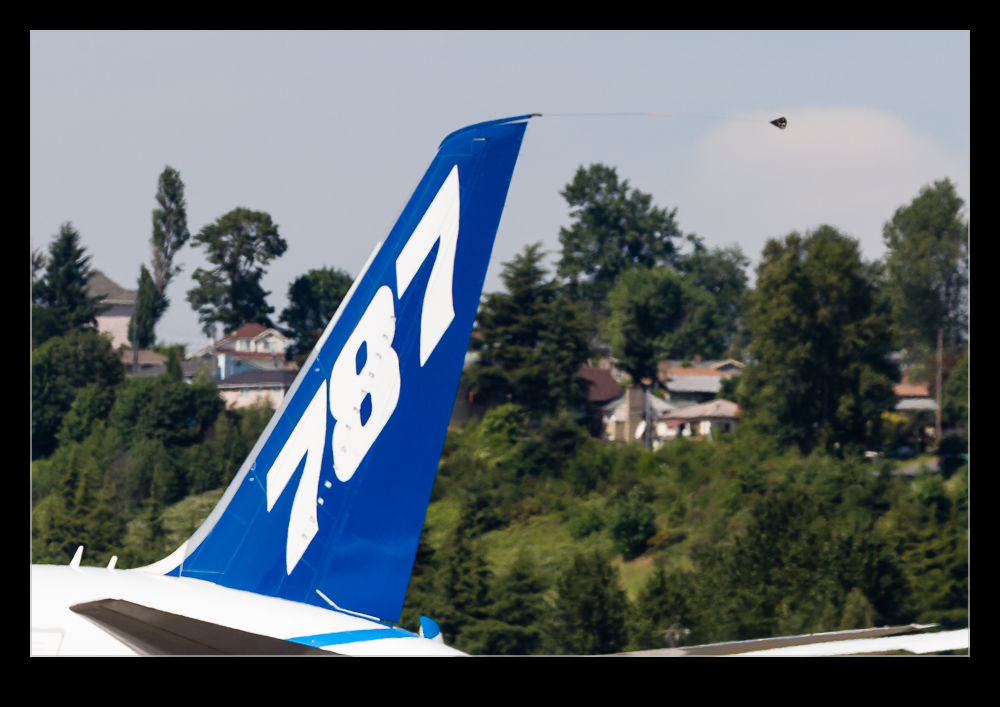 The aircraft has sensors that measure air data, two of the most important of which are the pitot probe and the static port. The pitot probe measures the dynamic pressure of the air which increases as the speed increases. The static port measures the air around the aircraft. The difference between the two is used to determine the speed of the aircraft and the static is used to determine the altitude. These are both vital information for a pilot. However, the aircraft affects the flow of the air around it so, while you can calculate what the pressures should be, you need to validate what the actual readings are. The first flights are carried out prior to calibrating the system so you need to have a bit of margin in the speeds you use until you have confidence in the readings.
The aircraft has sensors that measure air data, two of the most important of which are the pitot probe and the static port. The pitot probe measures the dynamic pressure of the air which increases as the speed increases. The static port measures the air around the aircraft. The difference between the two is used to determine the speed of the aircraft and the static is used to determine the altitude. These are both vital information for a pilot. However, the aircraft affects the flow of the air around it so, while you can calculate what the pressures should be, you need to validate what the actual readings are. The first flights are carried out prior to calibrating the system so you need to have a bit of margin in the speeds you use until you have confidence in the readings.
 Measuring static pressure is hard to do. The plane will have a static port on the skin of the plane as well as possibly incorporated with the pitot head. However, the air has accelerated to go around the fuselage so it is assumed to have a lower pressure than ambient. Because the plane is disturbing the flow, you need a way to measure the pressure some distance away from the plane. The answer is a trailing static cone.
Measuring static pressure is hard to do. The plane will have a static port on the skin of the plane as well as possibly incorporated with the pitot head. However, the air has accelerated to go around the fuselage so it is assumed to have a lower pressure than ambient. Because the plane is disturbing the flow, you need a way to measure the pressure some distance away from the plane. The answer is a trailing static cone.
 This cone incorporates pressure measurement sensors and it attached to a long cable. This is held on a reel inside the aircraft and fed out of the aircraft at the rear. For airliners, this is usually through a modification to the top of the fin. A comparison between the test aircraft and a production jet will show the different structure. The cable dangles out of the fin and, as the speed increases, the cone pulls the cable taught and streams backwards.
This cone incorporates pressure measurement sensors and it attached to a long cable. This is held on a reel inside the aircraft and fed out of the aircraft at the rear. For airliners, this is usually through a modification to the top of the fin. A comparison between the test aircraft and a production jet will show the different structure. The cable dangles out of the fin and, as the speed increases, the cone pulls the cable taught and streams backwards.
 When the testing is required, the cable is winched out and the cone is a long way behind the aircraft in what is relatively undisturbed airflow. If you go to the Museum of Flight, the prototype 747 is on display and it includes the trailing cone equipment in the fuselage. The reel is shown in its mounting location and the trailing cone is hung inside to allow you to take a look at it.
When the testing is required, the cable is winched out and the cone is a long way behind the aircraft in what is relatively undisturbed airflow. If you go to the Museum of Flight, the prototype 747 is on display and it includes the trailing cone equipment in the fuselage. The reel is shown in its mounting location and the trailing cone is hung inside to allow you to take a look at it.
A Primer 747 Really Catches the Sun
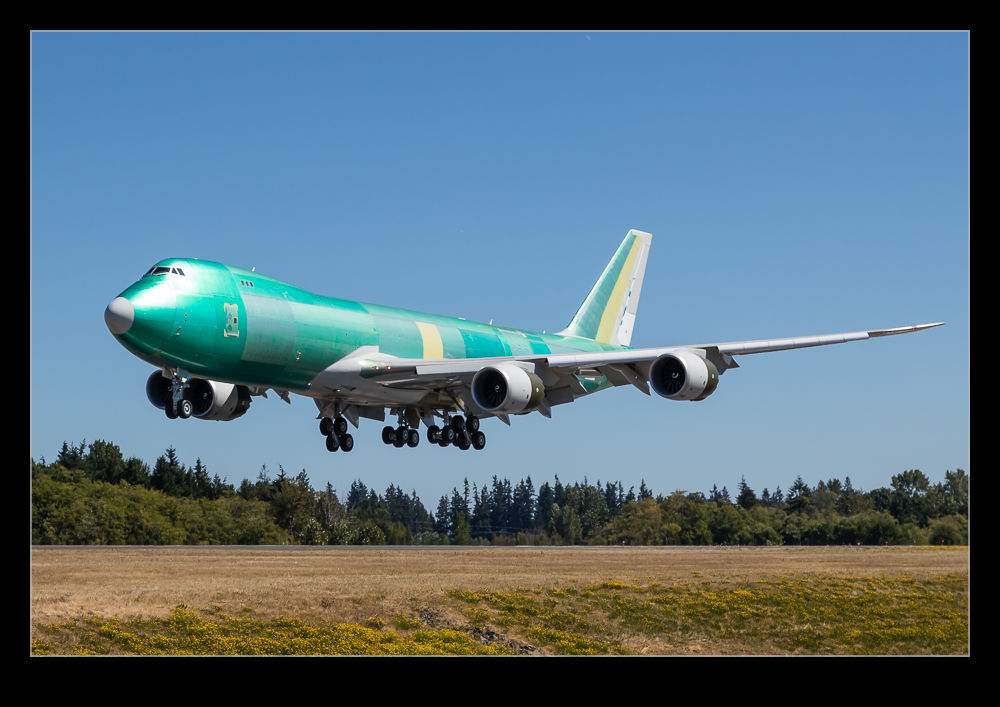 A primer finish on a jet looks a lot more dramatic in sunny conditions. The green finish of the protective film is quite reflective so the sun really makes the plane shine. This 747-8F freighter was carrying out some production test flying from Everett during a visit. I was getting ready to leave when it came in so I got a bunch of shots. As I was driving away, I heard the sound of a jet and it turned out the plane had landed, turned around and taken off in the opposite direction.
A primer finish on a jet looks a lot more dramatic in sunny conditions. The green finish of the protective film is quite reflective so the sun really makes the plane shine. This 747-8F freighter was carrying out some production test flying from Everett during a visit. I was getting ready to leave when it came in so I got a bunch of shots. As I was driving away, I heard the sound of a jet and it turned out the plane had landed, turned around and taken off in the opposite direction.
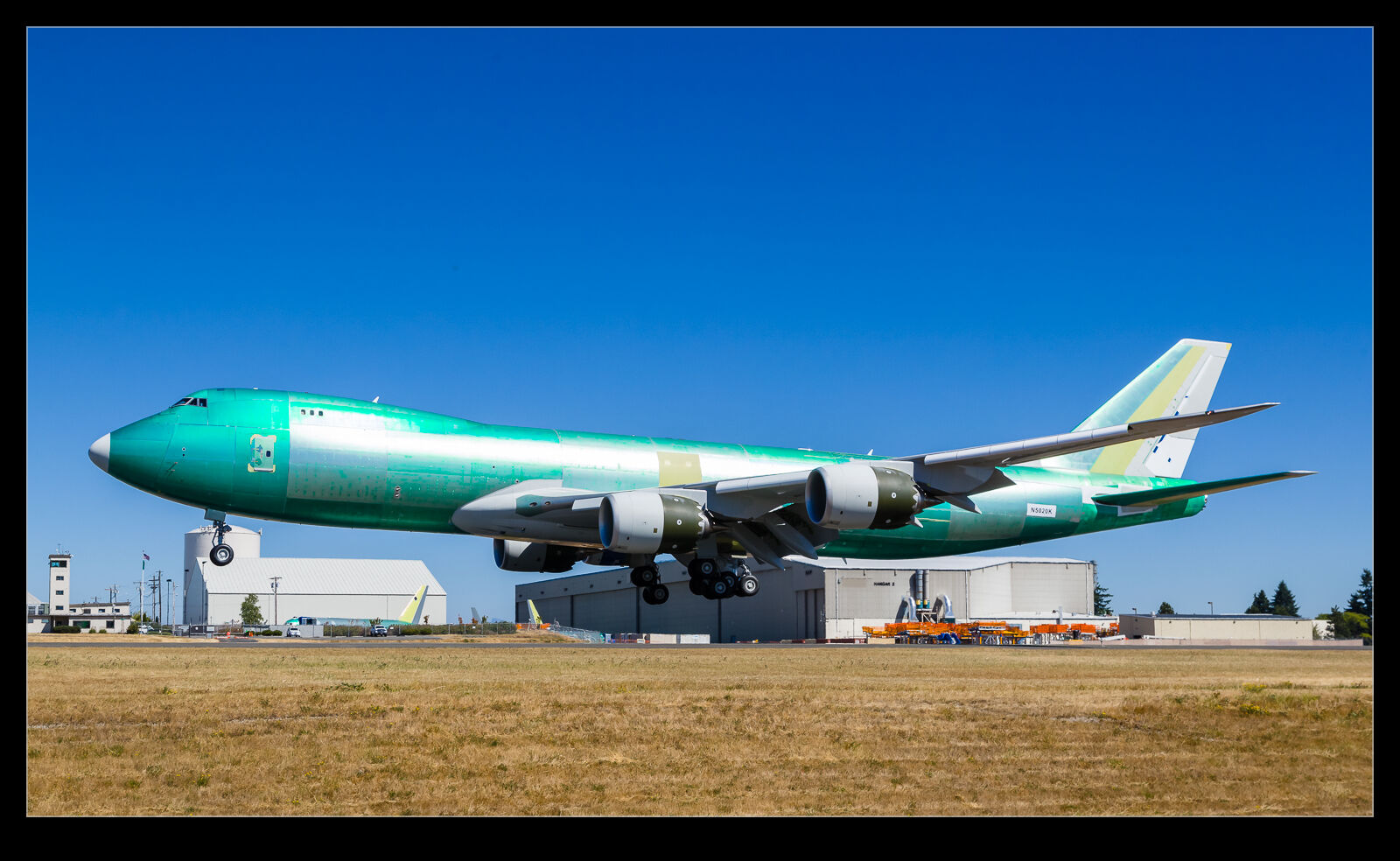 I was a bit annoyed as I saw it climb and turn pretty sharply – I assume it was lightly loaded. Then it became apparent it was going to make a teardrop turn and come back in to land again. Since I was now on the road home, I pulled off into a parking lot somewhere close to the line of the approach path and got the camera back out. Into view it came and flew across right ahead of me. I got a few extra shots. Not the dramatic climbing turn but still a nice to have addition.
I was a bit annoyed as I saw it climb and turn pretty sharply – I assume it was lightly loaded. Then it became apparent it was going to make a teardrop turn and come back in to land again. Since I was now on the road home, I pulled off into a parking lot somewhere close to the line of the approach path and got the camera back out. Into view it came and flew across right ahead of me. I got a few extra shots. Not the dramatic climbing turn but still a nice to have addition.
787 Development Jets
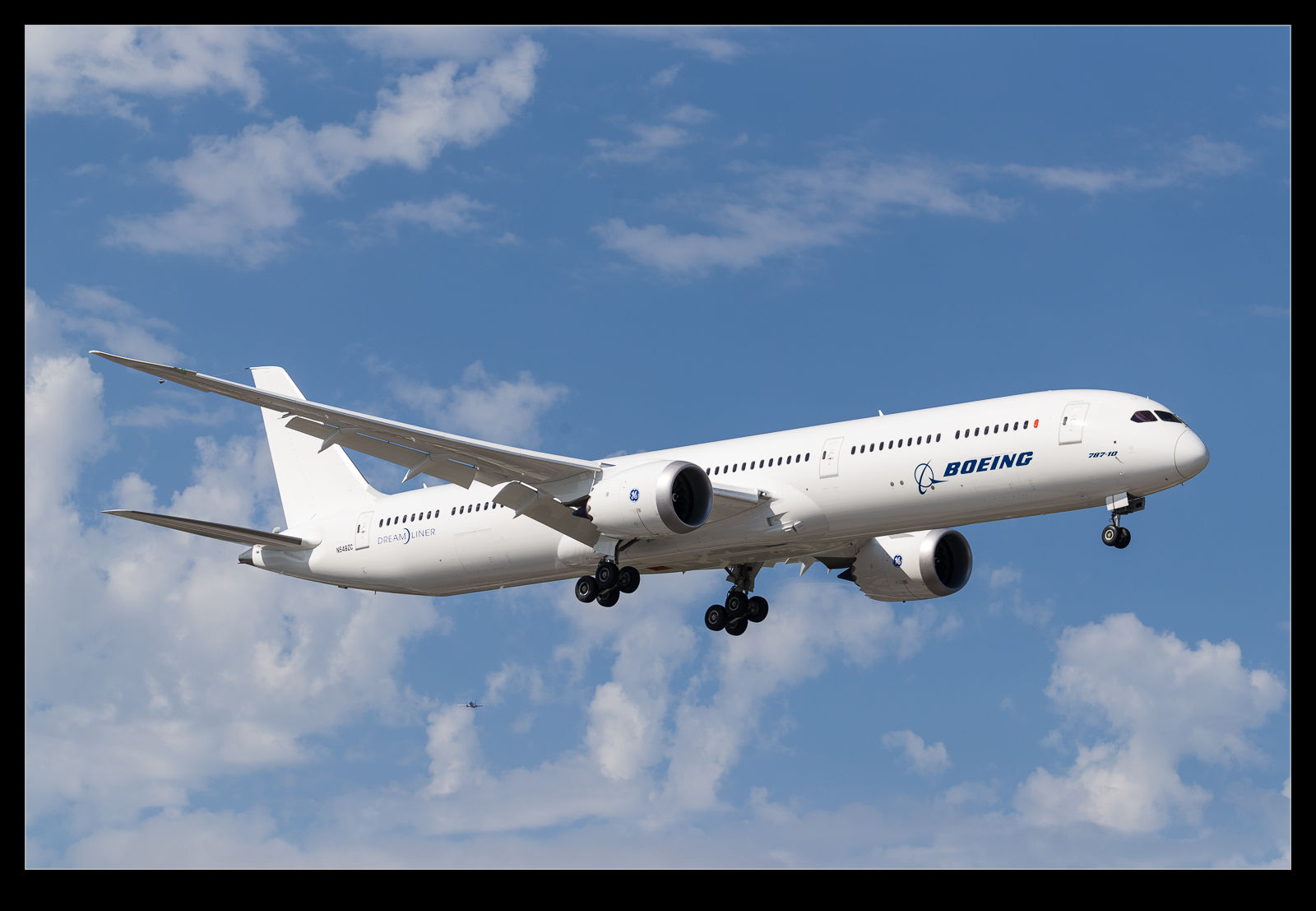 Two versions of the Boeing 787 have been in service for a while. However, development activities continue. The 787-10 is still undergoing flight test but work also continues on the older jets. Some of this is also related to the Dash 10. I had a post on my first encounter with the 787-10 which I wrote about here. I have since come across another of the test aircraft. This one is plain white and doesn’t benefit from the nice house colors that Boeing has.
Two versions of the Boeing 787 have been in service for a while. However, development activities continue. The 787-10 is still undergoing flight test but work also continues on the older jets. Some of this is also related to the Dash 10. I had a post on my first encounter with the 787-10 which I wrote about here. I have since come across another of the test aircraft. This one is plain white and doesn’t benefit from the nice house colors that Boeing has.
 Meanwhile, one of the 787-8 test aircraft has recently been testing the newest version of the Rolls Royce Trent 1000. I saw this engine when it was being tested on Rolls’ testbed in Tucson and that was in this post. Now it has been fitted to its intended platform and is undergoing trials. These have included lengthy flights around the US including one in which they traced out the planform of the aircraft across multiple states. If you are going to go flying for 18 hours, you might as well find a way to have fun with it. The aircraft is carrying the same logo on the engine nacelle that was on the testbed. Hopefully, the delayed upgraded engine will soon be in service, not just on the Dash 10 but also on the other variants.
Meanwhile, one of the 787-8 test aircraft has recently been testing the newest version of the Rolls Royce Trent 1000. I saw this engine when it was being tested on Rolls’ testbed in Tucson and that was in this post. Now it has been fitted to its intended platform and is undergoing trials. These have included lengthy flights around the US including one in which they traced out the planform of the aircraft across multiple states. If you are going to go flying for 18 hours, you might as well find a way to have fun with it. The aircraft is carrying the same logo on the engine nacelle that was on the testbed. Hopefully, the delayed upgraded engine will soon be in service, not just on the Dash 10 but also on the other variants.
Two Tankers
 The KC-46 Pegasus tankers have appeared in the blog before but only on the ground. That post can be found here. I have finally seen them flying. A couple of them were airborne on test flights from BFI and, while they had taken off quite far apart, they ended up returning quite close together so I was able to get shots of them both. They don’t look terribly dissimilar which is what you would expect. They are fully fitted out with the boom and one of them has the pods so this is what a service aircraft should look like when the Air Force squadrons start to get their hands on them.
The KC-46 Pegasus tankers have appeared in the blog before but only on the ground. That post can be found here. I have finally seen them flying. A couple of them were airborne on test flights from BFI and, while they had taken off quite far apart, they ended up returning quite close together so I was able to get shots of them both. They don’t look terribly dissimilar which is what you would expect. They are fully fitted out with the boom and one of them has the pods so this is what a service aircraft should look like when the Air Force squadrons start to get their hands on them.
Structural Remains
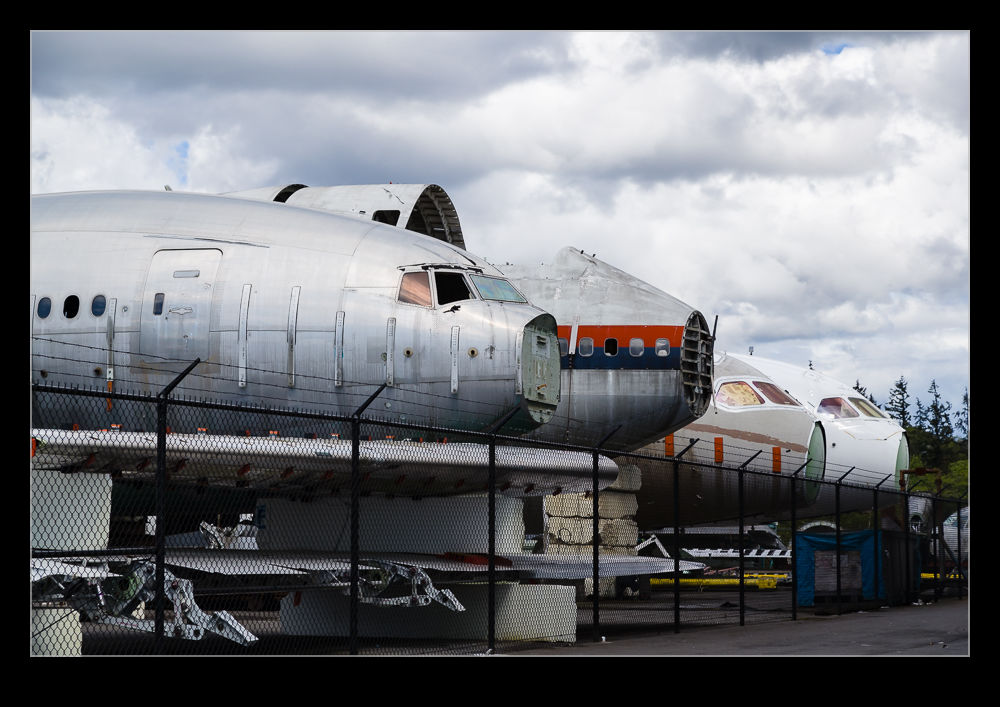 I do like coming across test aircraft. Production jets will be seen all over the place in due course but the test aircraft often show small signs of their test role no are a bit more individual. However, any test program also includes airframes that never get much coverage. This is because they never fly. Structural test specimens are vital but usually out of sight.
I do like coming across test aircraft. Production jets will be seen all over the place in due course but the test aircraft often show small signs of their test role no are a bit more individual. However, any test program also includes airframes that never get much coverage. This is because they never fly. Structural test specimens are vital but usually out of sight.
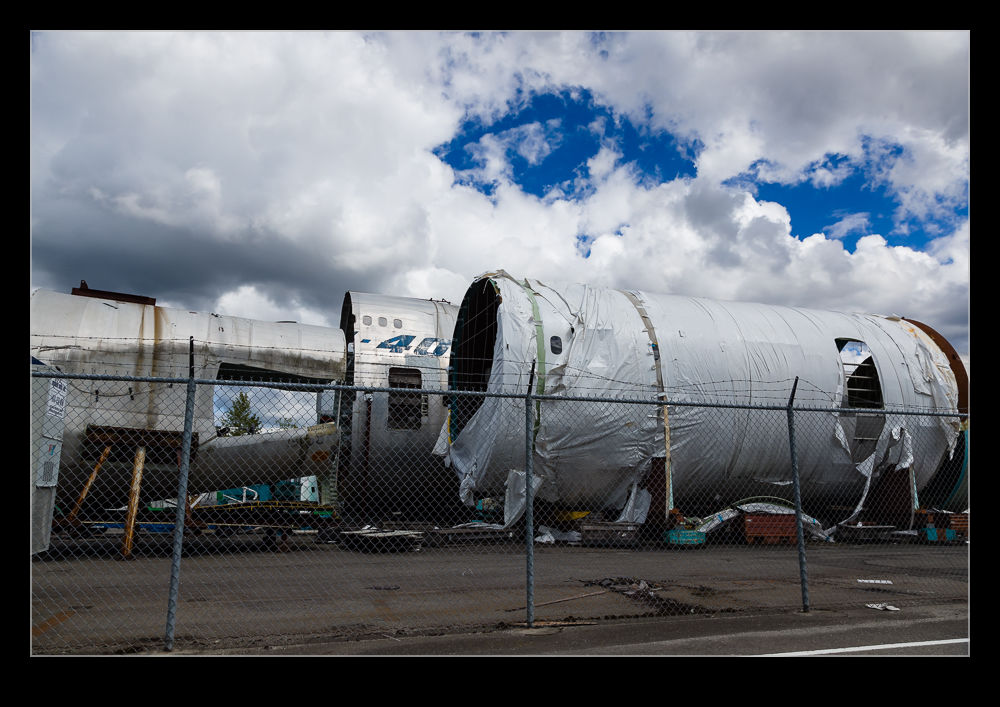 Boeing has a yard around the back of the Everett plant in which the remains of these test articles are stored. Bits of airframe sit awaiting any possible future use. The yard also includes a few bits that appear to have been operational at some time. The front fuselage of a 747-400 that still shows United colors is there. I wonder whether it was bought back to allow them to do a condition assessment based on the in service fleet.
Boeing has a yard around the back of the Everett plant in which the remains of these test articles are stored. Bits of airframe sit awaiting any possible future use. The yard also includes a few bits that appear to have been operational at some time. The front fuselage of a 747-400 that still shows United colors is there. I wonder whether it was bought back to allow them to do a condition assessment based on the in service fleet.
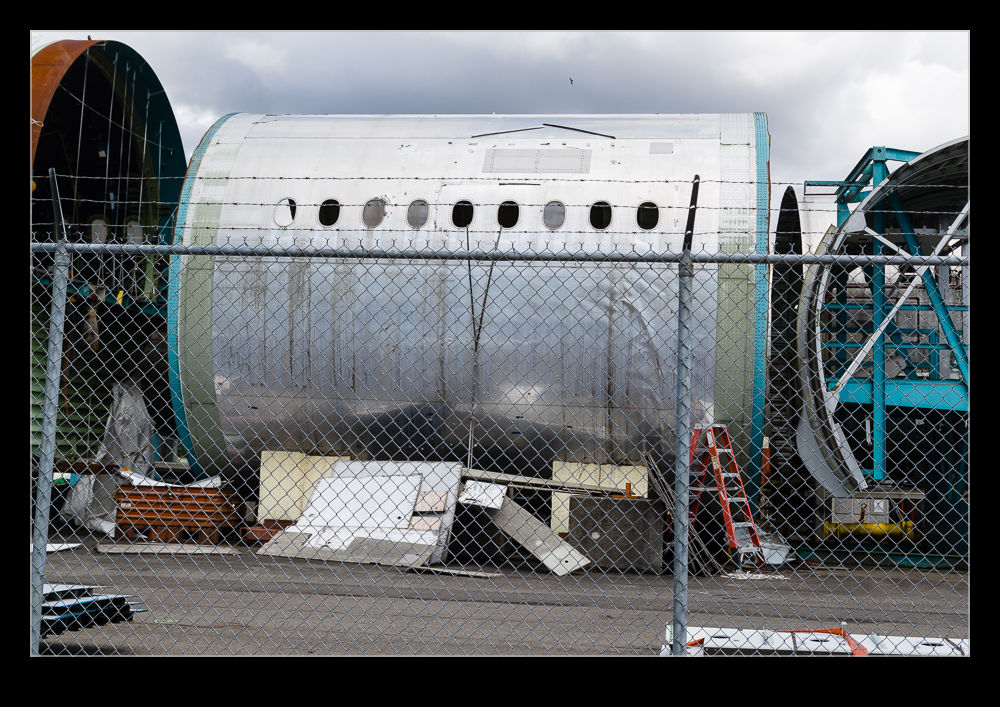 Irrespective of how they got here, they are all rather forlorn looking as they sit in this space, out of the way and maybe never to be used again. Service life extension programs may require them to be brought out again although I have no idea whether the storage outdoors will have rendered them less useful.
Irrespective of how they got here, they are all rather forlorn looking as they sit in this space, out of the way and maybe never to be used again. Service life extension programs may require them to be brought out again although I have no idea whether the storage outdoors will have rendered them less useful.
Building But Not Delivering – The KC-46 Story
 The tale of the USAF’s quest for a new refueling tanker has been long and drawn out. People went to jail, awards were made and overturned. None of that matters now. The contract is with Boeing to produce a variant of the 767 as the KC-46 Pegasus. The program has not been smooth. Technical and production issues have caused delays. The in service date has slipped and Boeing has incurred a lot of overruns.
The tale of the USAF’s quest for a new refueling tanker has been long and drawn out. People went to jail, awards were made and overturned. None of that matters now. The contract is with Boeing to produce a variant of the 767 as the KC-46 Pegasus. The program has not been smooth. Technical and production issues have caused delays. The in service date has slipped and Boeing has incurred a lot of overruns.
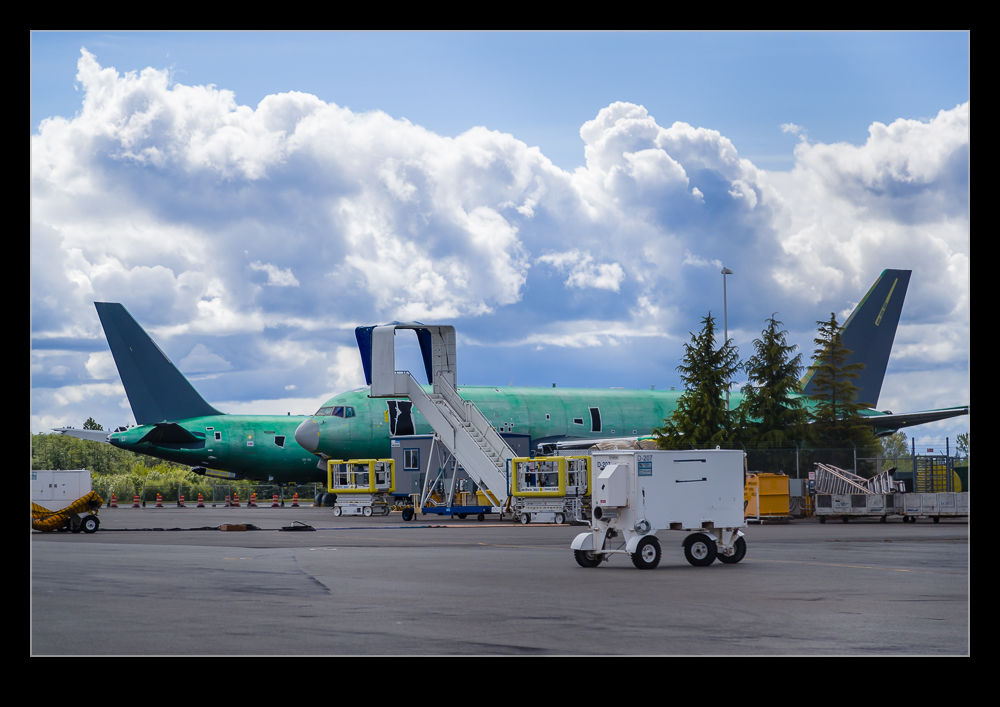 While all of this has been going on, the production process has not stopped. Consequently, while testing still continues, there are production airframes coming off the line. If you go to Boeing Field, there are a bunch of test airframes on the flight line. If you go to Paine Field, there are a bunch more that remain to be finished. It appears that Boeing is building the airframes, sealing them up, not fitting high value items like engines, and parking them wherever there is space. A few years ago, Paine Field was covered in undelivered 787s. Now it is as if time has turned back because the Dreamliner’s predecessor is the type parked all over the place.
While all of this has been going on, the production process has not stopped. Consequently, while testing still continues, there are production airframes coming off the line. If you go to Boeing Field, there are a bunch of test airframes on the flight line. If you go to Paine Field, there are a bunch more that remain to be finished. It appears that Boeing is building the airframes, sealing them up, not fitting high value items like engines, and parking them wherever there is space. A few years ago, Paine Field was covered in undelivered 787s. Now it is as if time has turned back because the Dreamliner’s predecessor is the type parked all over the place.
